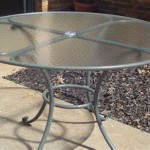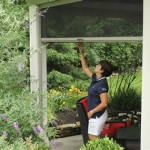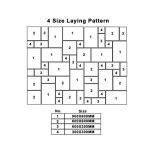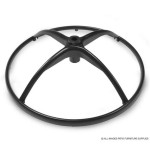DIY Paver Patio Ideas for Costa Rica: Creating Your Tropical Oasis
Costa Rica, renowned for its lush landscapes and vibrant culture, presents unique opportunities for homeowners seeking to enhance their outdoor living spaces. A DIY paver patio provides an accessible and rewarding way to transform a backyard into a functional and aesthetically pleasing area. This article explores practical ideas for designing and installing a paver patio that aligns with the specific climate and aesthetic preferences of Costa Rica.
The success of a DIY paver patio project in Costa Rica hinges on several factors. Selecting appropriate materials that withstand the tropical climate, implementing proper ground preparation techniques to ensure stability, and choosing a design that complements the surrounding environment are all critical. Careful planning and execution mitigate potential challenges and result in a durable and beautiful outdoor space.
Selecting Pavers for the Costa Rican Climate
The Costa Rican climate, characterized by high humidity, frequent rainfall, and intense sun exposure, necessitates careful consideration when selecting paver materials. Certain types of pavers are better suited to these conditions than others. Durability and resistance to moisture absorption are paramount factors to consider.
Concrete pavers are a popular choice due to their affordability, durability, and availability in diverse styles and colors. They are manufactured to withstand heavy loads and resist cracking. However, concrete pavers can be susceptible to staining and fading over time, particularly with prolonged exposure to intense sunlight and moisture. Sealing concrete pavers regularly with a high-quality sealant helps mitigate these issues and extend their lifespan.
Clay pavers, also known as brick pavers, offer a classic and timeless aesthetic that complements the natural beauty of Costa Rica. They are naturally resistant to fading and offer excellent slip resistance, making them a safe choice for areas prone to moisture. Clay pavers are porous, however, and can absorb water, leading to potential damage in freezing temperatures. While freezing temperatures are not common in most of Costa Rica, higher elevations experiencing colder conditions might require a different paver choice. Choosing a denser, vitrified clay paver minimizes water absorption and enhances durability.
Natural stone pavers, such as flagstone, travertine, and slate, offer a unique and luxurious look. They are highly durable and resistant to weathering, making them a suitable choice for the Costa Rican climate. However, natural stone pavers can be more expensive than concrete or clay pavers and may require specialized installation techniques. The specific type of natural stone will influence its suitability. Some natural stones may be more porous than others, requiring sealing to prevent staining and water damage. Consider the texture of the stone for slip resistance, especially around pool areas or locations exposed to frequent rainfall.
Consider the aesthetic appeal of each paver type in relation to the existing architecture and landscaping. Darker pavers can absorb more heat, making them potentially uncomfortable underfoot during the hottest parts of the day. Lighter-colored pavers reflect sunlight and remain cooler. The paver's texture also plays a role in both aesthetics and functionality. A rougher texture provides better slip resistance but may be more difficult to clean.
Preparing the Ground for Paver Installation
Proper ground preparation is crucial for ensuring the stability and longevity of a paver patio. A solid and well-compacted base prevents settling, shifting, and unevenness, which can lead to costly repairs and detract from the aesthetic appeal of the patio. Inadequate ground preparation is a common cause of paver patio failure.
The first step in ground preparation is to excavate the area to the appropriate depth. This depth depends on the type of paver used, the intended use of the patio, and the soil conditions. Generally, an excavation depth of 6-8 inches is sufficient for a standard paver patio. Remove all vegetation, roots, and debris from the excavated area. Ensure the excavated area is level and free of any large rocks or obstructions.
Next, install a layer of geotextile fabric over the excavated area. This fabric serves as a barrier between the soil and the base material, preventing the mixing of the two and improving drainage. Geotextile fabric also helps to stabilize the soil and prevent weed growth. Overlap the edges of the fabric by at least 12 inches to ensure complete coverage.
After installing the geotextile fabric, add a layer of compacted base material. Crushed stone or gravel is commonly used for this purpose. The base material should be spread evenly and compacted in layers using a plate compactor. Compacting the base material is essential for creating a stable and level surface for the pavers. The base layer typically ranges from 4-6 inches in depth.
Finally, add a layer of bedding sand over the compacted base material. The bedding sand provides a smooth and level surface for the pavers to rest on. Use a screed board to level the sand to a uniform depth of approximately 1 inch. Avoid compacting the bedding sand, as this can make it difficult to adjust the pavers during installation. The bedding sand should be damp but not saturated.
Proper drainage considerations are critical, especially given Costa Rica's climate. Ensure the patio slopes slightly away from any buildings or structures to allow rainwater to drain properly. Install drainage channels or French drains if necessary to prevent water from pooling on the patio surface. Poor drainage can lead to erosion, damage to the paver patio, and potential foundation problems.
Design Ideas for a Costa Rican Paver Patio
The design of a paver patio should complement the surrounding environment and reflect the homeowner's personal style. Costa Rica offers a unique blend of natural beauty and cultural influences that can be incorporated into the patio design. Consider the size and shape of the patio, the paver pattern, and the surrounding landscaping when developing the design.
A simple and classic paver pattern is the running bond, where the pavers are laid in a staggered pattern similar to brickwork. This pattern is easy to install and provides a clean and uniform look. A herringbone pattern, where the pavers are laid at a 45-degree angle, creates a more visually interesting and dynamic design. A basketweave pattern, where the pavers are laid in alternating pairs, offers a traditional and elegant look. For more complex designs, consider using a combination of different paver sizes and colors to create intricate patterns and borders.
Incorporate natural elements into the patio design to create a seamless connection with the surrounding environment. Use local plants, such as tropical flowers, ferns, and palms, to create a lush and inviting atmosphere. Consider adding a water feature, such as a small fountain or pond, to create a relaxing and tranquil space. Natural stone features, such as boulders or rock walls, can also enhance the aesthetic appeal of the patio.
Consider the functionality of the patio when developing the design. Determine how the patio will be used and plan the layout accordingly. If the patio will be used for dining, create a designated dining area with ample space for a table and chairs. If the patio will be used for lounging, create a comfortable seating area with comfortable furniture and shade cover. Incorporate outdoor lighting to extend the use of the patio into the evening hours. String lights, lanterns, and spotlights can create a warm and inviting ambiance.
Consider incorporating Costa Rican design elements into the patio. Incorporate vibrant colors, such as reds, oranges, and yellows, which are commonly found in Costa Rican art and architecture. Use traditional Costa Rican tile patterns to create unique borders or accents. Include handcrafted furniture or decorative elements made by local artisans. These elements add a touch of authenticity and cultural charm to the patio.
Shade is an important consideration in Costa Rica's tropical climate. Plan for adequate shade cover to protect from the intense sun. Consider building a pergola or installing a retractable awning to provide shade. Plant trees or vines around the patio to create natural shade. Shade allows for comfortable use of the patio even during the hottest parts of the day.
Integrating the paver patio seamlessly with the existing landscape is crucial. Use the patio as a transition between different areas of the garden. Create pathways that lead from the patio to other parts of the yard. Use landscaping to soften the edges of the patio and blend it into the surrounding environment. This creates a cohesive and harmonious outdoor space.
By carefully considering these design ideas and incorporating the specific requirements of the Costa Rican climate, homeowners can create a beautiful and functional paver patio that enhances their outdoor living experience.

9 Ways To Turn A Tiny Costa Rican Townhouse Backyard Into An Oasis

9 Ways To Turn A Tiny Costa Rican Townhouse Backyard Into An Oasis

9 Ways To Turn A Tiny Costa Rican Townhouse Backyard Into An Oasis

How To Design The Perfect Tropical Patio Décor Tips Ideas Cerulean Bay

9 Ways To Turn A Tiny Costa Rican Townhouse Backyard Into An Oasis

9 Ways To Turn A Tiny Costa Rican Townhouse Backyard Into An Oasis

9 Ways To Turn A Tiny Costa Rican Townhouse Backyard Into An Oasis

Rosetta Pre Planned Patio 4

Deck Ideas 40 Ways To Design A Great Backyard Or Patio Sunset

How To Design The Perfect Tropical Patio Décor Tips Ideas Cerulean Bay
Related Posts








